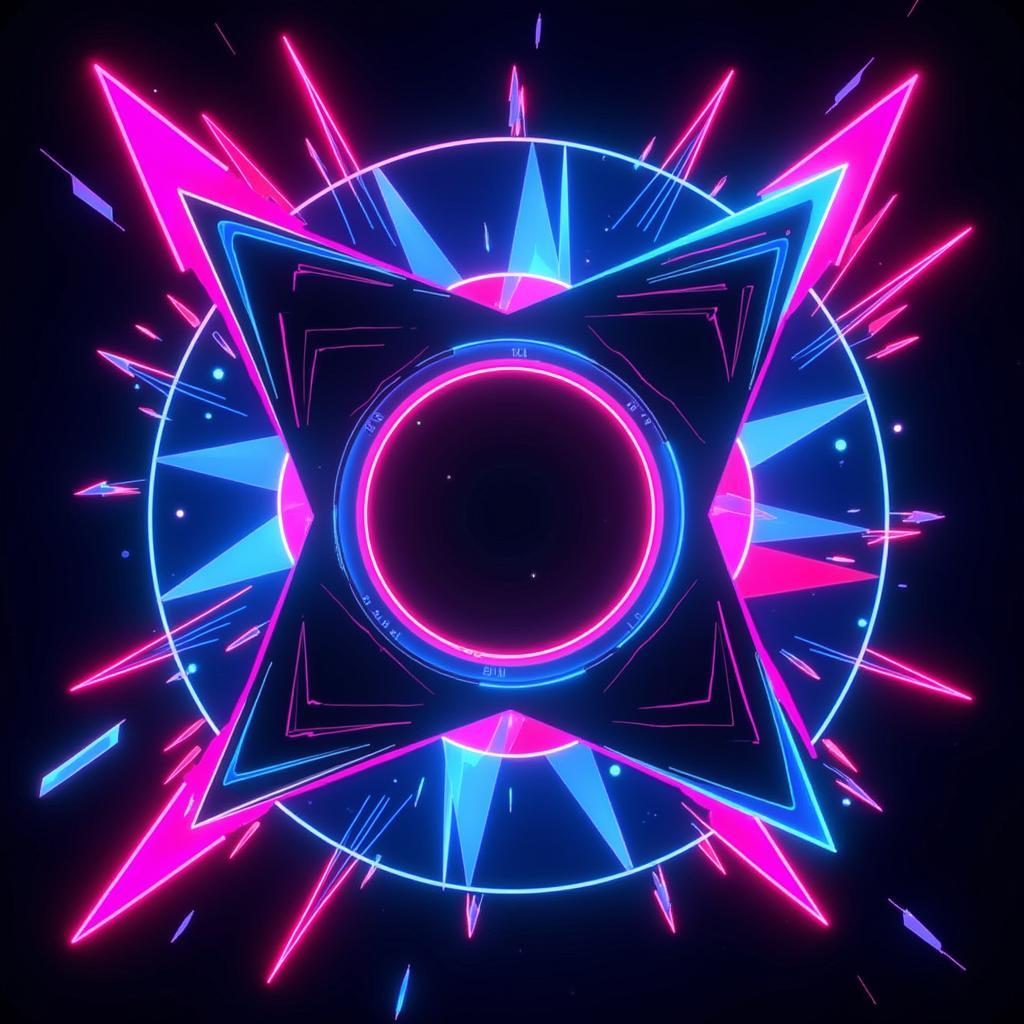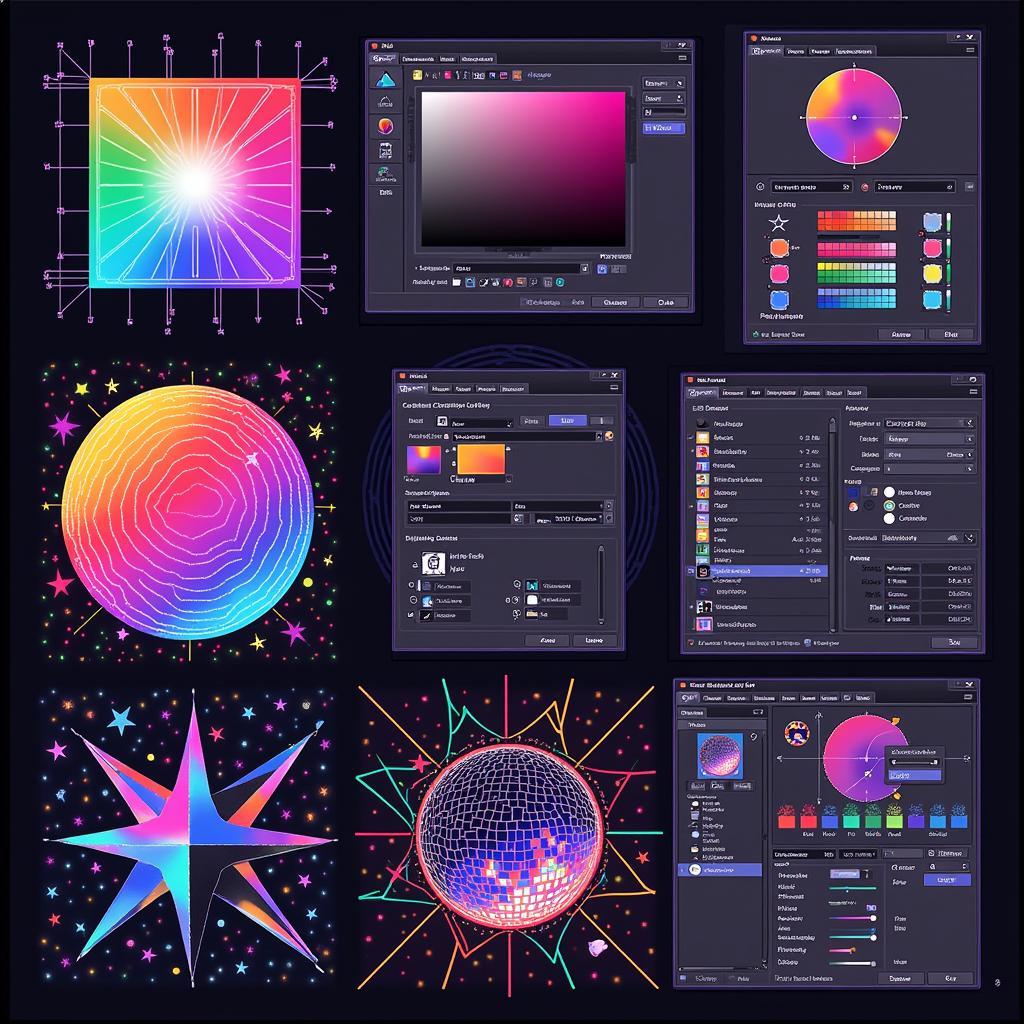Discovering the Vibrant World of Disco Art
Disco Art. It’s a term that evokes the glitz, glamour, and energy of the 1970s disco scene, but it also encompasses a much broader spectrum of artistic expression. From the iconic album covers and posters of the era to contemporary digital art inspired by the disco aesthetic, this vibrant art form continues to captivate and inspire. We’ll delve into the history, influences, and modern interpretations of disco art, exploring its enduring appeal and how it continues to evolve in the digital age. Check out the incredible work of Emily Adams Art for some contemporary inspiration.
The Roots of Disco Art: A Visual Symphony of the 70s
Disco art emerged as a visual counterpart to the music and culture of the disco era. It was a reflection of the times, capturing the exuberance, freedom, and optimism of the 70s. Bold colors, geometric patterns, and shimmering surfaces were hallmarks of this style, mirroring the pulsating rhythms and dazzling light shows found in discotheques. Album covers became canvases for artistic expression, featuring airbrushed portraits, futuristic typography, and otherworldly landscapes. These visual elements not only captured the essence of the music but also created a sense of escapism and fantasy.
Disco Art’s Influence: Fashion, Film, and Beyond
The influence of disco art extended far beyond album covers, permeating fashion, film, and interior design. Clothing featured shimmering fabrics, bold prints, and extravagant silhouettes, mirroring the visual language of disco art. Films like “Saturday Night Fever” showcased the fashion and dance culture of the era, further solidifying the disco aesthetic in popular culture. Even interior design embraced the disco vibe, with mirrored walls, colorful lighting, and geometric patterns becoming popular choices. This widespread adoption of disco’s visual language cemented its place in the cultural landscape of the 1970s.
Disco Art in the Digital Age: A Modern Renaissance
While rooted in the 70s, disco art continues to thrive in the digital age. Contemporary artists are reimagining the disco aesthetic, incorporating elements of retro design with modern digital techniques. This revival sees artists experimenting with vibrant color palettes, geometric abstractions, and shimmering textures, often infused with a futuristic twist. Digital tools allow for greater flexibility and experimentation, pushing the boundaries of what disco art can be. If you’re interested in exploring Charleston SC wall art, you might find some pieces influenced by this vibrant aesthetic.
 Modern Interpretation of Digital Disco Art: Retro Meets Futuristic
Modern Interpretation of Digital Disco Art: Retro Meets Futuristic
What Defines Disco Art? Key Characteristics and Elements
Several key characteristics define disco art. The vibrant color palettes, often featuring contrasting hues, create a sense of energy and excitement. Geometric patterns, such as stripes, circles, and zigzags, add a sense of dynamism and movement. Shimmering surfaces, achieved through the use of metallic inks, glitter, or digital effects, evoke the dazzling lights of the discotheque. These elements work together to create a visual language that is both captivating and evocative of the disco era. For an even deeper dive into art history, check out Libros historia del arte.
How to Create Your Own Disco Art: Tips and Techniques
Want to try your hand at creating your own disco art? Experiment with bold color combinations, geometric shapes, and shimmering textures. Digital art software offers a wide range of tools to create these effects. You can also explore traditional mediums like painting, collage, and even fashion design to express your own interpretation of the disco aesthetic. Explore the world of English Miniatures Fine Art Sculpture for a different artistic perspective.
 Creating Disco Art with Digital Tools: Experiment with Colors and Shapes
Creating Disco Art with Digital Tools: Experiment with Colors and Shapes
Conclusion: The Enduring Legacy of Disco Art
Disco art, born from the vibrant culture of the 1970s, continues to inspire and influence artistic expression today. Its bold colors, geometric patterns, and shimmering surfaces remain iconic visual elements that capture the energy and optimism of the disco era. As artists continue to explore and reinterpret this aesthetic in the digital age, the legacy of disco art lives on, reminding us of the power of art to reflect and shape culture.
FAQ
- What is the main inspiration for disco art? The music and culture of the 1970s disco scene.
- What are some key elements of disco art? Bold colors, geometric patterns, and shimmering surfaces.
- How has disco art evolved in the digital age? Digital tools allow for greater experimentation and modern interpretations.
- How can I create my own disco art? Experiment with bold colors, geometric shapes, and shimmering textures using digital or traditional mediums.
- Where can I find examples of contemporary disco art? Online art platforms and galleries showcasing digital and traditional art.
- What is the lasting impact of disco art? Its iconic visual elements continue to inspire and influence art and design.
- What other art forms were influenced by disco? Fashion, film, and interior design.
Need more help?
Contact us for support:
Phone Number: 02462573573
Email: danteum@gmail.com
Address: Savico Megamall, 7-9 Đ. Nguyễn Văn Linh, Gia Thụy, Long Biên, Hà Nội 10000, Việt Nam.
We have a 24/7 customer support team.